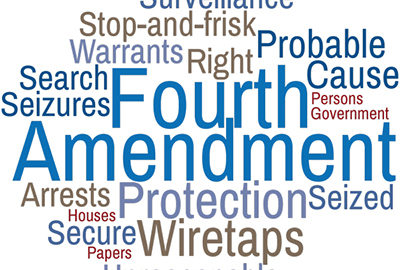Use of Handcuffs During Investigatory Stop Is Not An Arrest
United States of America v. Fiseku
17-1222-cr
United States Court of Appeals: Second Circuit
Decided October 4, 2018
ISSUE
Whether an officer’s use of handcuffs in an investigatory detention is unreasonable and provokes a de facto arrest without probable cause in violation of the Fourth Amendment when the officer had a reasonable suspicion to stop the defendant, examined the defendant’s license, patted him down and placed handcuff under the guise of officer safety.
HOLDING
The Second Circuit Court of Appeals held that under unusual circumstances, such as those observed in this case, an officer’s use of handcuffs during an investigatory detention does not result in a de facto arrest under the Fourth Amendment. The officers acted reasonably during the late-night investigatory stop in restraining Fiseku and two other individuals in handcuffs before the officers developed probable cause to arrest because 1) The officer was outnumbered before backup arrived. 2) The driver of the vehicle lied about the car’s transmission and potentially lied about harboring two additional people. 3) The officer did not know if the defendants could reach their weapons.
FACTS OF THE CASE
In September 2014 at about 1:15 AM, Sergeant Vincent Gruppuso pulled up to a white Nissan Pathfinder and engaged in a short discussion with the driver, later identified as Sefedin Jajaga. He explained that the Pathfinder was stopped on a dirt pull-off because the car was having transmission problems and he was waiting for a friend who agreed to bring a tow truck. While driving off, Gruppuso found the situation to be dubious because he knew of a vacant home for sale nearby that would be a prime target for… burglary. He decided to go back and check on the vehicle only to find the Pathfinder driving on a nearby street only five minutes after the driver claimed to have transmission problems. Gruppuso followed the car to a parking lot near the highway.
Gruppuso entered the parking lot, and observed the Pathfinder parked in the far corner of the lot, surrounded by trees. He parked nearby and saw three men in the vicinity of the Pathfinder: Jajaga in the driver’s seat, a second man, named Hughes, in the passenger seat and a third man, named Fiseku, walking around the rear of the vehicle. At 1:25 AM, Gruppuso radioed for additional units to join him in the parking lot. By the time additional officers arrived, Gruppuso had already begun questioning Fiseku: examining his driver’s license, patting him down and placing him in handcuffs. Together, the three officers directed Jajaga and Hughes to exit the Pathfinder, then patted them down and handcuffed them as well. The three men were handcuffed under the guise of officer safety.
The officers explained to the men that they were being detained; they were not told they were under arrest nor were they read their Miranda Rights while the officers investigated their suspicious behavior. The defendants were separated for individual questioning and, with consent, Gruppuso searched the Pathfinder where he recovered the following items: baseball caps, a sweatshirt, a badge, a stun gun, a BB gun replicating a Colt .45 pistol, a blank pistol replicating a .25 automatic, flashlights, walkie talkies, gloves, a screw driver and duct tape. After the search was complete, officers were concerned about a potential home invasion, so they requested additional units to canvas the area.
In September 2015, Fiseku and Jajaga moved to suppress physical evidence recovered from the vehicle and statements made to the officers during the stop, arguing both points under the Fourth and Fifth Amendments. In December 2015, the District Court entered an order granting in part and denying in part the suppression motion. The court rejected the defendant’s claim that there was a de facto arrest without probable cause in violation of the Fourth Amendment and reasoned that the officer’s conduct, including the handcuffs, was reasonable in light of the circumstances. The court granted the motion to suppress the defendants’ statements because the defendants were subjected to interrogation without being read their Miranda rights. They did, however, reject the defendants’ request to suppress physical evidence because Jajaga’s consent to search the vehicle was voluntary and freely given.
COURT’S ANALYSIS
The Second Circuit Court of Appeals held that under unusual circumstances an officer’s use of handcuffs does not result in a de facto arrest under the Fourth Amendment. In the Fourth Amendment there is a defined right to be free from unreasonable searches and seizures however, an officer’s decision to briefly restrain a suspect in handcuffs is reasonable if it ensures the officers’ safety. The U.S. Constitution intends for reasonableness to mean a balancing of particular need to search or seize against the privacy interests invaded by such actions.
Generally, an arrest must be supported by probable cause; however, an officer may conduct a brief investigatory detention, commonly known as a Terry stop, as long as the officer has reasonable suspicion that the person to be detained is committing or has committed a criminal offense. Yet even a proper investigatory stop can ripen into a de facto arrest that must be based on probable cause. In considering a claim of de facto arrest, the courts consider the following facts:
(1) the length of time involved in the stop; (2) its public or private setting; (3) the number of participating law enforcement officers; (4) the risk of danger presented by the person stopped; and (5) the display or use of physical force against the person stopped, including firearms, handcuffs, and leg irons.
The courts cautioned in United States v. Newton, 369 F.3d 659, 674 (2d Cir. 2004) that no one of these factors is determinative. But to satisfy the reasonableness standard, officers conducting stops on less than probable cause must employ the least intrusive means reasonably available to affect their legitimate investigative purposes.
According to the court, this case presented unusual circumstances where an officer was able to handcuff a suspect without transforming a Terry v. Ohio,392 U.S. 1stop into an arrest. Gruppuso had reason to believe that Jajaga lied about why he was stopped on a dirt pull-off when only five minutes after their initial interaction Gruppuso saw the Pathfinder drive into the dark parking lot surrounded by trees because it was highly improbable that Jajaga managed to start the car only moments after claiming the transmission of the car was broken. Gruppuso’s suspicions were reasonably heightened when there were two additional passengers, Hughes and Fiseku, that he did not know of during the initial interaction with Jajaga. Given the aforementioned observations and the fact that Gruppuso arrived in the parking lot only moments after the Pathfinder, it is reasonable for Gruppuso to have inferred that either Hughes and Fiseku were hiding in the car during the interaction or they had been waiting for Jajaga in the parking lot. In either scenario, the court determined that in this setting, a reasonably cautious officer in Gruppuso’s position would have objective grounds to suspect that the three men were about to commit a crime, or that they had recently done so.
In the time it took for two additional officers to arrive, Gruppuso didn’t find any weapons or contraband on Fiseku’s person during the pat down but, the Supreme Court expressly recognized that suspects may injure police officers and others by virtue of their access to weapons, even though they themselves may not be armed. The Michigan v. Long, 463 U.S. 1032, 1048 (1983) Court went on to explain that investigative detentions involving suspects in vehicles are especially fraught with danger to police officers. Additional suspects Jajaga and Hughes were still seated in the Pathfinder when Gruppuso handcuffed Fiseku, where weapons could have been placed within reach. Additionally, in the dark, surrounded by trees, Gruppuso couldn’t feasibly conduct a protective sweep to check for secreted weapons or additional associates while monitoring three suspects, who the District Court described as ‘muscular men’
Handcuffs are generally seen as a hallmark of a formal arrest. Newton, 369 F.3d at 676 yet, the courts recognize that regardless of whether probable cause to arrest exists, a law enforcement agent, faced with the possibility of danger, has a right to take reasonable steps to protect himself. Sensing the conflict between the two principles, the courts elaborate that the Fourth Amendment will occasionally permit handcuffs in a Terry stop if the police have a reasonable basis to think that the person detained poses a present physical threat and that handcuffing is the least intrusive means to protect against that threat. United States v Bailey, 743 F.3d 322 (2d Cir. 2014).
Fiseku prompts the courts to consider United States v. Bailey, where, on appeal, the courts found that there was a violation of the Fourth Amendment when the officers handcuffed the suspects because the record indicated no physical threat or other factors that would justify the handcuffing of these two men. Conversely, Gruppuso was not looking to identify the men like in the Bailey case; he simply stumbled upon a suspicious scenario in the middle of the night in a secluded, wooded location. His goal was to either confirm or deny his suspicion that they had committed, or were poised to commit, a home invasion or some other crime. The likelihood of criminal activity increased the risk that one or more suspects had access to a weapon or might attempt to flee; therefore, Guppuso had to make the decision to best protect himself and the community, acting in the face of uncertainty about how many associates might be present, what sort of criminal activity they might be involved in, or whether any of them might have access to a weapon.

